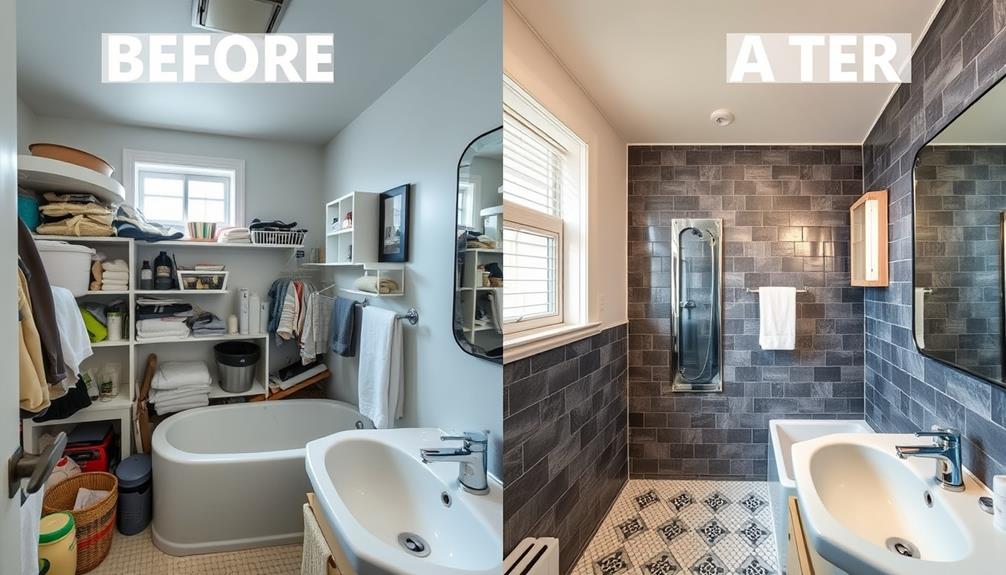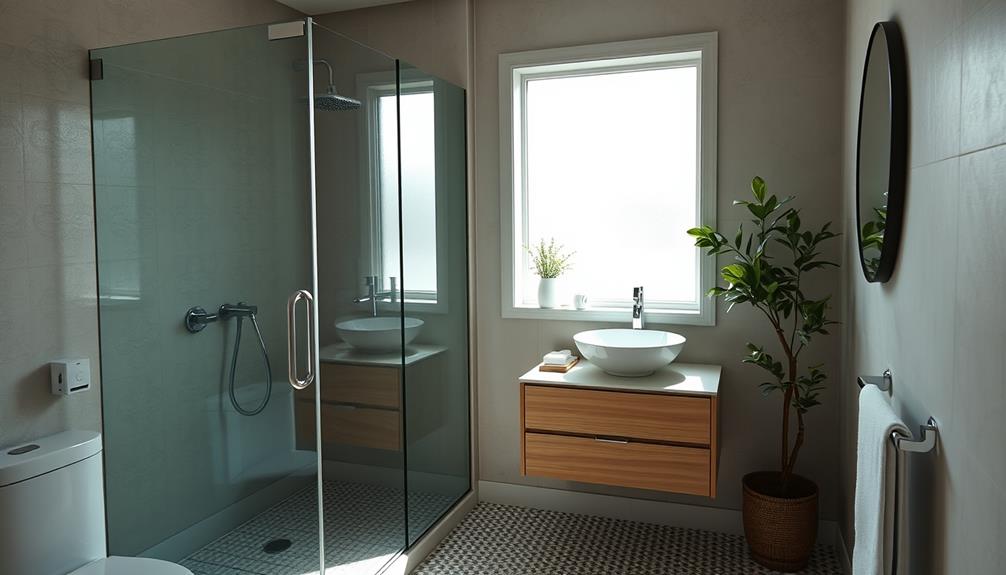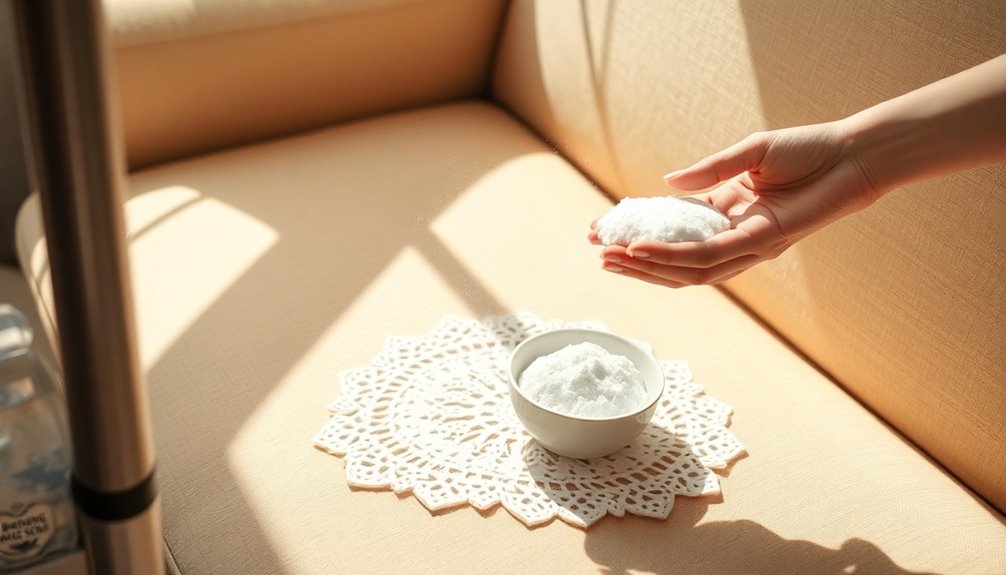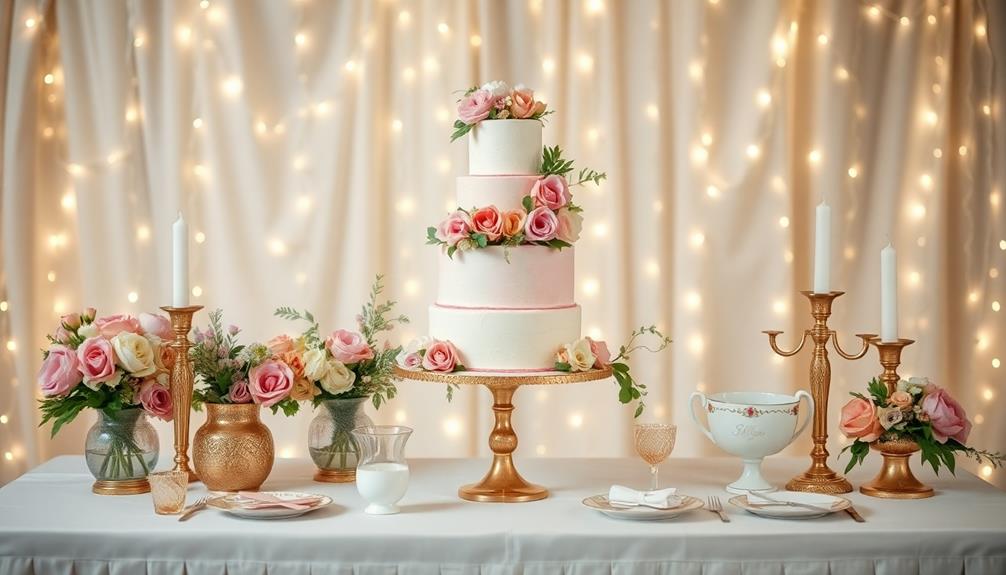When beginning your bathroom renovation, make sure to evaluate the current layout and potential issues in the space, such as wasted areas or outdated fixtures. Take measurements to ensure that new designs will fit properly. Establish a realistic budget that includes materials and unexpected costs. Sketch out design ideas and seek inspiration before consulting with a contractor to confirm the structural feasibility. Prior to starting any demolition, clear out the area and turn off utilities. Opt for moisture-resistant finishes and fixtures that align with your desired aesthetic. As you continue to plan, you’ll discover more valuable tips for a successful renovation journey. Consider incorporating bathroom remodel ideas that improve functionality and storage, like installing a new vanity with ample drawers or incorporating built-in shelving. Additionally, consider adding energy-efficient lighting and fixtures to lower utility expenses in the long term. Don’t overlook any necessary special needs or accessibility features for household members. With careful planning and attention to detail, your bathroom remodel can truly enhance the space, creating a functional and visually pleasing room.
Key Takeaways
- Assess the current bathroom layout, taking measurements and identifying any wasted space or structural limitations before planning changes.
- Set a realistic budget by calculating average remodeling costs and including a cushion for unexpected expenses.
- Create a design vision by sketching your ideal layout and gathering inspiration through mood boards and online resources.
- Prepare for demolition by clearing the space, shutting off utilities, and implementing a cleanup strategy to manage dust and debris.
- Choose moisture-resistant finishes and water-efficient fixtures that align with your design vision for a functional and stylish bathroom.
Assessing Your Current Bathroom
Begin by evaluating your current bathroom to pinpoint areas that need improvement. Focus on the overall layout and assess how well the space functions.
Take measurements of each element, including the vanity, toilet, and fixtures, to see if they align with your desired design. Consider any adjustments that might enhance functionality. Additionally, think about how your remodel can fit into your overall budget planning, which is essential for managing costs effectively.
Next, look for wasted space, as well as structural limitations like plumbing and electrical placements that could restrict your remodeling options. Assess the condition of existing materials and fixtures. If you spot signs of wear or damage, you'll likely need replacements during the remodel.
Create a checklist of must-have features and aesthetic preferences. This will guide your design vision and help you stay on track throughout the remodeling process.
Prioritize elements that improve both functionality and style, ensuring that your new bathroom meets your needs.
Setting a Realistic Budget
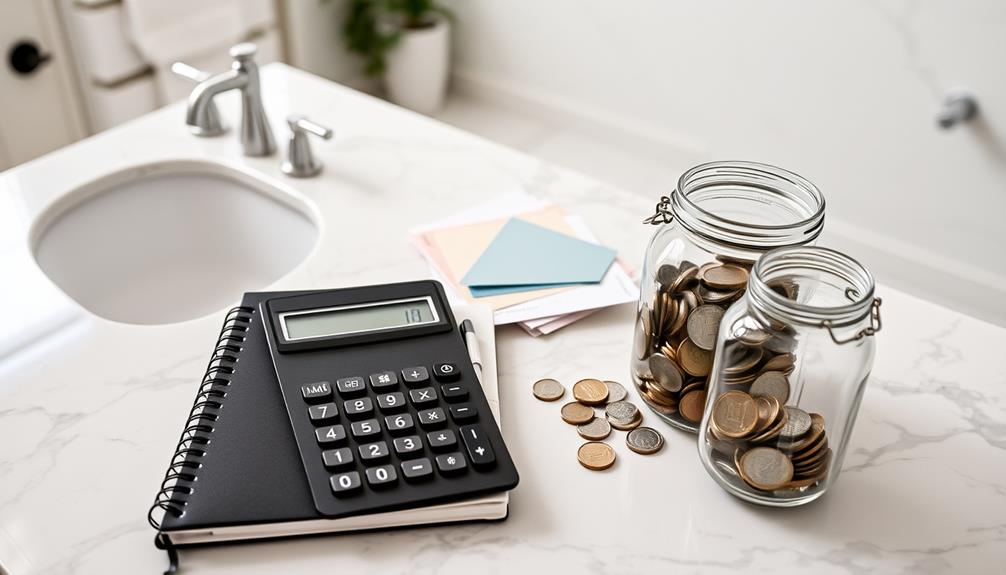
When planning your bathroom remodel, setting a realistic budget is essential to keep your project on track. Start by calculating the average remodeling costs, which typically range from $175 to $225 per square foot. The average project cost is around $10,753, with spending usually between $6,127 and $15,383.
Include all expenses, such as materials and fixtures, tools, supplies, contractor fees, and permits. Additionally, consider researching common types of cold medications for any potential health needs that may arise during your remodeling process.
Don't forget to prepare for unexpected costs. It's wise to allocate an additional 10-20% of your total budget to cover potential overruns, like hidden damages or design changes.
To get the best value, research and compare prices from local suppliers, ensuring your budget aligns with your desired materials and fixtures.
As you continue with your remodel, document all estimated costs and track actual expenses. This practice helps maintain financial control and avoid overspending.
Planning Your Design Vision
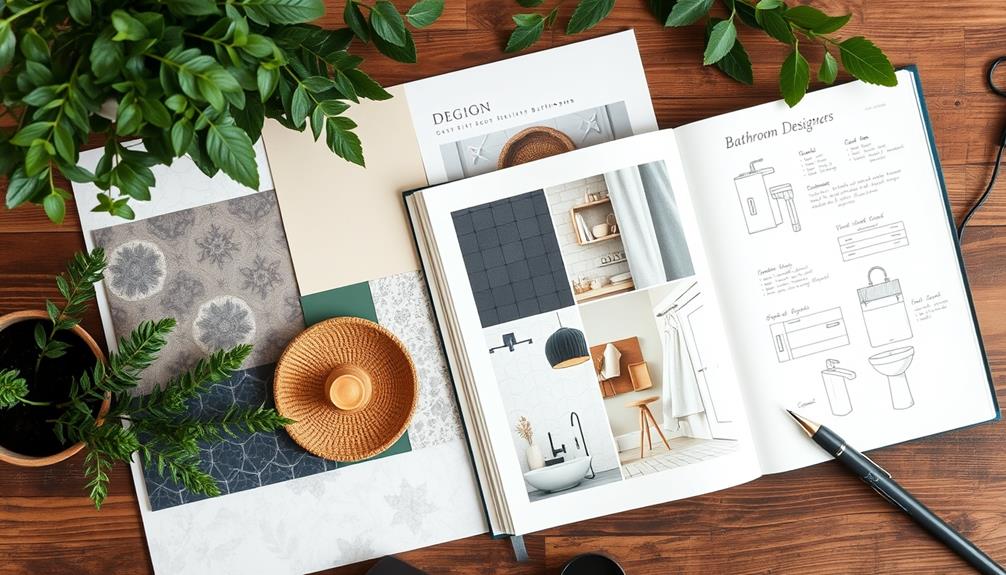
Planning your design vision is an essential step in your bathroom remodel, as it sets the stage for a space that reflects your style and meets your needs. Start by evaluating your current bathroom layout to identify necessary changes.
Sketch your ideal design, which will help you make decisions about the placement of fixtures and finishes. Do you want to install a new shower or a soaking tub? Consider how these changes fit within your existing setup. Exploring your personal tastes can lead to surprising insights about your design preferences, so keep that in mind as you plan.
For additional inspiration, refer to mood boards important for visualizing design concepts. Research design inspirations online and visit local home improvement stores to gather ideas that align with your vision and budget. This can spark creativity and help you make informed choices.
As you decide on design elements, create a detailed budget that includes materials, labor, and potential permits. This guarantees your vision is financially feasible and prevents surprises down the line.
Consulting with a general contractor is significant to evaluate the feasibility of your design choices. They can provide insights on structural requirements and material availability, helping you avoid issues like water damage.
Preparing for Demolition
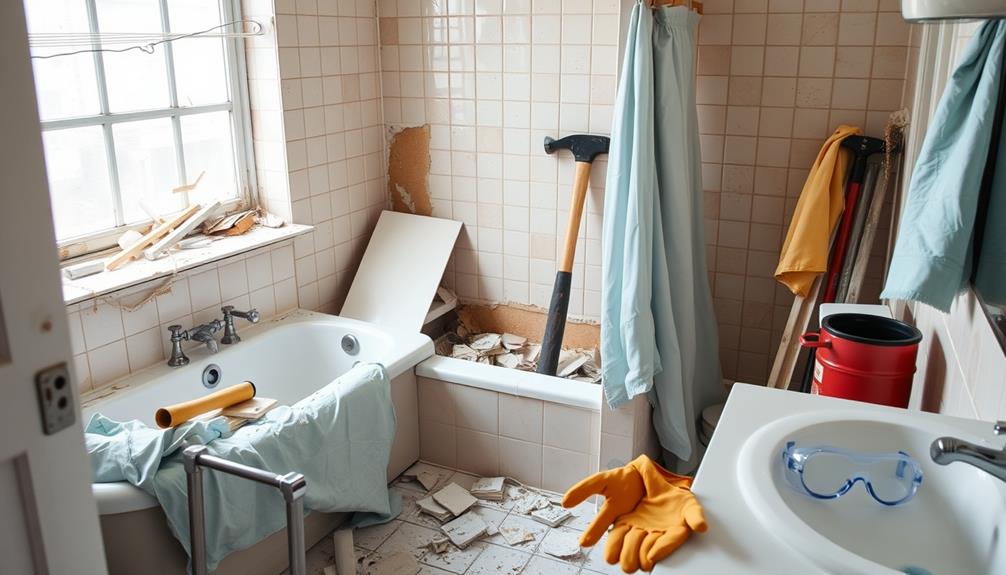
With your design vision in place, it's time to prepare for demolition. Start by removing all accessories and non-fixed objects from the bathroom. This clears your workspace and protects items you want to keep.
Next, shut off the water supply and turn off electricity at the main breaker box. This step is essential to prevent leaks and electrical hazards during the renovation.
Consider the importance of a thorough cleanup process, as it can also help prevent contamination similar to preventing cross-contact in food preparation areas.
If you're leaving any fixtures in place, cover them with protective materials to shield them from dust and debris. Identify and mark load-bearing walls, and if you're removing the toilet, plug the waste pipes to maintain the structural integrity of your space.
Develop a waste management plan, such as renting a dumpster for debris disposal. This will streamline your cleanup process and keep your workspace organized.
Choosing Finishes and Fixtures

Choosing the right finishes and fixtures can transform your bathroom from ordinary to extraordinary. When you're choosing finishes, prioritize materials that are moisture-resistant, like ceramic tiles for flooring and quartz or granite for countertops. This guarantees durability in the humid bathroom environment.
Additionally, consider incorporating essential oils like eucalyptus or peppermint, which can create a rejuvenating atmosphere and support respiratory health during your bath time routine essential oils for respiratory health.
Consider these key elements as you select your fixtures:
- Grout color: A lighter grout brightens the space, while a darker grout offers dramatic contrast and hides stains.
- High-quality faucets: Opt for WaterSense-labeled fixtures that use at least 20% less water, enhancing efficiency without sacrificing style.
- Smart fixtures: Touchless faucets and programmable showers can elevate both convenience and aesthetics, bringing modern technology into your space.
Make certain your fixtures align with your overall design vision—whether modern, traditional, or transitional—because they greatly impact both functionality and aesthetics.
Frequently Asked Questions
In What Order Should You Renovate a Bathroom?
To renovate a bathroom, start by removing fixtures, then tackle plumbing and electrical work. Next, install drywall and flooring, followed by the vanity and sink. Finally, add finishing touches like paint and decor.
How to Begin a Bathroom Renovation?
To begin your bathroom renovation, set a clear budget first. Assess your layout and decide on plumbing changes. Create a detailed plan with a timeline, and gather design inspiration to guide your decisions. Consider hiring a professional contractor to assist with the renovation, especially if you’re making significant changes to the layout or plumbing. Make sure to prioritize functionality and storage in your design, and don’t overlook the importance of proper lighting. These bathroom renovation tips can help ensure a successful and satisfying project outcome.
What Do You Install First in a Bathroom Remodel?
Think of your bathroom as a canvas; start by installing plumbing fixtures. They're the foundation of your masterpiece. Then lay flooring, ensuring you create a sturdy base before adorning your space with tiles and cabinetry.
Can I Renovate My Bathroom for ?
Yes, you can renovate your bathroom for $5,000. Focus on cosmetic updates like painting, replacing fixtures, and DIY projects. Prioritize budget-friendly materials, and be mindful of costs for plumbing and electrical work.
Conclusion
As you immerse yourself in your bathroom remodel, think of it like planting a garden; with careful planning and nurturing, you'll create a space that blooms beautifully. Remember to assess your current bathroom, set a budget, and carefully select your finishes. Embrace the process, knowing that each decision brings you closer to a rejuvenating oasis. Soon, you'll be stepping into a transformed sanctuary that reflects your style and meets your needs. Happy remodeling!
